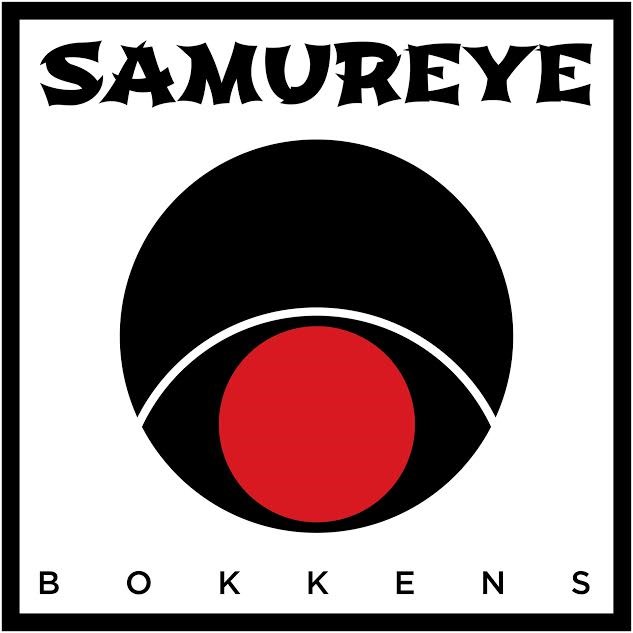Recent Articles
-
Real Katana Pushed to the limits
Mar 07, 25 01:16 AM
Interview with Samureye
Thank you for taking the time to do this interview with us!
First of all, we’d love to know - how did Samureye get started?
Samureye Bokkens as a business started in 2014 by Chris and Colin with a emphasis on creating eye-catching, functional bokken and wood weapons from exotic hardwoods. The company grew from a small hobby sized woodshop with limited space and tools. The need for a larger dedicated space arose and the operation was moved to its current location. The new space has some additional upgrades such as industrial quality tools and dust collection, along with a storage and finishing area.

What were your early prototypes like? What sorts of issues did you have to work around as you figured out how to improve your product?
Chris was making bokken 20 years ago to replace broken and damaged bokken from training. At this time the internet was not available as a source of new or replacement pieces. Originally the first template came from an actual live Daito. This is still the template style we use for most of our bokken.
As design flaws of improper grain and poor wood choices were rectified, the emphasis to every Samureye Bokken starts with correct wood choices from the outset, the style and function are secondary to wood choice.
The biggest challenge is working with extremely hard woods, the resins and actual hardness of the wood dull edged tools at a much greater rate than most continental hardwoods.
How many people make up Samureye?
Our company is small and there are 2 people who run the whole show.
As a former woodworker I’m quite curious – what is your process for designing and creating your bokkens? What sorts of tools do you use?
Generally the process starts once again with selecting a proper piece of raw material at the store. Next blanks are created with templates drawn on the wood ready for rough shaping on the bandsaw. We then use routers and sanders to shape the blank and ready it for final sanding and application of the protective finish.
Some bokkens are entirely hand made with edged hand tools, these tend to have a more natural and one of a kind appeal. Grain direction and pattern is given close attention on these pieces.
You seem to use a variety of exotic hardwoods – what makes these kinds of wood superior for use in training?
Coming from a background in furniture making and design, Chris noticed that some of the exotic hardwoods were nearly impossible to dent and damage. He chose to apply this knowledge to bokken design and because of the density and durability of the woods make them the natural choice for a contact training weapon. Continental Oak and Hickory are great choices for bokkens as well. A visual and aesthetic difference between exotic and domestic woods heavily favors the exotic species. The two woods types (exotic and domestics) offer different performance characteristics, which is why we carry both types in stock.
Your website has only recently been live, but you were active at the 2015 Central Canada Comicon. How has business been since you started?
Business has been good.We have been working on promotion and as always making more bokkens. We have new wood selections to add to our current inventory. These include Beech, Purpleheart, Tigerwood, Sapele, Bubinga and Osage Orange. We are bringing a few new designs such as Triple Lamination using two different woods, models with more and less spine curve to reflect sword designs from different historical periods. As well as new hybrid design bringing together the size and handle thickness of a suburito, and the classic shape of our standard bokken. These we have found to have excellent feel and weight for users with large hands. This line is known as the XL Elite and will be available in a collector’s edition limited run. These bokken are only available in Purpleheart and Tigerwood.
Since you guys make bokkens, I’m going to take a wild guess here – are any of you into sword collecting?
Currently we are not actively collecting swords,but we have a huge collection of bokkens and they're all available on our website.
I understand that one of your bokkens was inspired by Miyamoto Musashi – can you tell us a bit about it, and why you chose to make it the way you did?
The inspiration came from the tale of Musashi fighting the samurai on the sand bar. Musashi disgraced a local samurai and was supposed to duel him the next morning on the sand bar. Musashi got drunk and slept in the next morning. Rushing to get to the duel Musashi left his swords at home. He didn't remember until it was too late. Forcing him to carve a wooden bokken out of a spare oak oar in the boat on the way to the duel. Musuashi then proceeded to kill the samurai with a single well timed blow with his wooden bokken. There were no depictions of this actual bokken so it was up to creativity at that point. The bokken was made out of a solid piece of Ipe which was too big for a single bokken and too small to be made into two bokkens. The bokken ended up with a classic handle flowing into an oar shaped tip. The original sold at the comic con, but we are working on a hand carved version of this same design.
Thanks for sharing with us, and good luck in the future!
Thanks Dan it was our pleasure. if anyone has any further questions they can check out the website to view our inventory or contact us through email.















